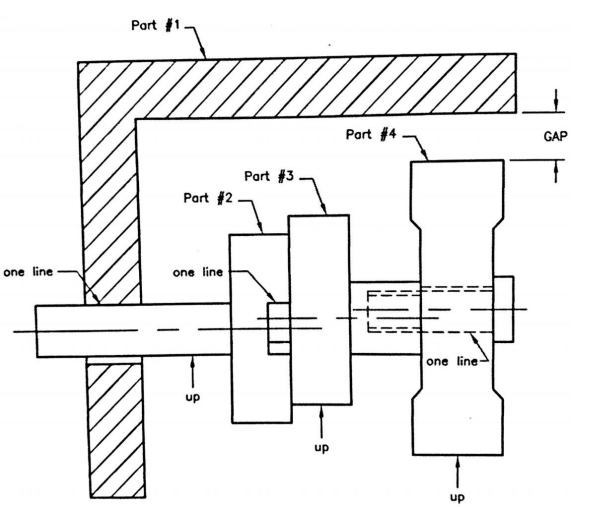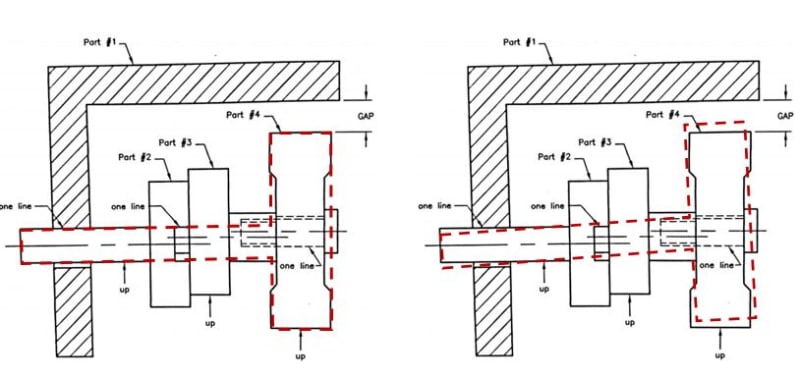Michael Boble
Aerospace
- Apr 30, 2020
- 9
Hello everyone.
I am practicing with the Tolerance StackUp theme to determine the GAP of the following image:

I have three proposals so far of the routes that can be used, however I would like to know your opinion to see if my deductions can be correct (I share my 3 proposals below) Any other route that occurs to you would be accepted.

Thanks for your support
(An apology for my drawings, I have a little trouble representing it on the computer)
I am practicing with the Tolerance StackUp theme to determine the GAP of the following image:

I have three proposals so far of the routes that can be used, however I would like to know your opinion to see if my deductions can be correct (I share my 3 proposals below) Any other route that occurs to you would be accepted.

Thanks for your support
(An apology for my drawings, I have a little trouble representing it on the computer)

